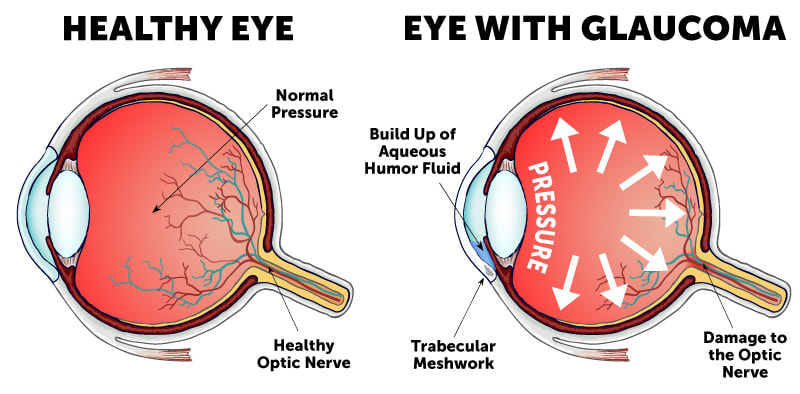Understanding the Various Vision Correction Procedures Available for Clearer Sight
In the realm of vision correction procedures, a wide range of alternatives exist to address refractive mistakes and provide individuals with more clear sight. From the extensively recognized LASIK surgical treatment to much less intrusive procedures like PRK and implantable lenses, the field of ophthalmology offers a series of strategies tailored to match various requirements and preferences. Each procedure features its very own collection of factors to consider, advantages, and possible dangers. Understanding the nuances of these vision improvement methods is important for making informed decisions about one's visual wellness. Allow's discover the ins and outs of these procedures and clarified the path to accomplishing boosted vision clarity.
LASIK Surgical Procedure
LASIK surgical procedure is a typical refractive procedure used to remedy vision troubles such as nearsightedness, astigmatism, and farsightedness - retina service near me. This medical strategy, which means Laser-Assisted sitting Keratomileusis, intends to improve the cornea to boost exactly how light is concentrated on the retina, eventually enhancing vision clearness. During the procedure, a thin flap is created on the cornea, and a laser is used to remove specific quantities of cells to improve it suitably. This reshaping permits light to be precisely concentrated onto the retina, fixing refractive mistakes.
One of the key benefits of LASIK surgical procedure is the fast improvement in vision experienced by individuals. On the whole, LASIK surgical treatment is a preferred choice for people looking for a long-lasting option for their vision troubles.
PRK Treatment
While additionally a common refractive procedure, the PRK (Photorefractive Keratectomy) technique varies from LASIK surgical treatment in its method to remedying vision troubles. In PRK, instead of producing a flap on the cornea, the external layer of the cornea, called the epithelium, is entirely gotten rid of. This allows the laser to improve the cornea to fix refractive mistakes such as nearsightedness, farsightedness, and astigmatism directly externally.

Despite the longer recuperation time, PRK can yield exceptional lead to vision improvement, making it a beneficial alternative for those who may not appropriate prospects for LASIK surgical treatment.
Implantable Lenses
As opposed to PRK where the cornea is reshaped straight, implantable lenses provide an additional technique for dealing with vision by placing artificial lenses inside the eye. This treatment is specifically advantageous for individuals with high levels of astigmatism, farsightedness, or nearsightedness who may not appropriate candidates for laser surgical procedures like LASIK or PRK.
Implantable lenses, additionally referred to as phakic intraocular his comment is here lenses, job by supplementing the eye's all-natural lens with a fabricated one. refractive surgeries in al. These lenses can be placed in front of the natural lens (anterior chamber) or behind the iris and in front of the natural lens (posterior chamber) By readjusting the power and positioning of these lenses, eye doctors can successfully correct refractive errors and improve aesthetic skill
One benefit of implantable lenses is that they are exchangeable and detachable, providing versatility for future adjustments. However, just like any type of medical procedure, there are dangers involved, such as infection or cataract development. People taking into consideration implantable lenses need to talk to an eye care specialist to identify one of the most suitable alternative based upon their specific requirements and eye wellness.
Corneal Rings
Corneal rings, likewise referred to as intracorneal ring segments, are tiny, clear gadgets placed right into the cornea to deal with vision distortions such as keratoconus. Keratoconus is a condition where the cornea thins and protrudes exterior, triggering vision to become altered. The insertion of corneal rings helps to squash the cornea, boosting aesthetic skill and lowering the uneven astigmatism created by keratoconus.
The treatment for putting corneal rings is fairly fast and minimally invasive, typically carried out image source as an outpatient procedure. During the surgical procedure, the ophthalmologist makes a tiny laceration in the cornea and inserts the rings at a specific depth. When in area, the rings aid to improve the cornea, providing a smoother surface area for light to enter the eye, which can result in clearer vision.
Corneal rings are taken into consideration a relatively easy to fix procedure, as they can be gotten rid of or replaced if required. glaucoma service near me. While they may not totally eliminate the need for glasses or get in touch with lenses, corneal rings can significantly improve vision top quality and general aesthetic comfort for people with keratoconus or various other corneal irregularities
Refractive Lens Exchange
Adhering to the adjustment of corneal abnormalities with procedures like corneal rings, an address additional vision adjustment strategy that can address refractive mistakes is Refractive Lens Exchange (RLE) RLE is a procedure that entails replacing the eye's all-natural lens with an artificial intraocular lens (IOL) to correct refractive errors such as farsightedness, nearsightedness, and presbyopia. This treatment is specifically advantageous for individuals that may not be appropriate prospects for treatments like LASIK or PRK as a result of factors such as thin corneas or high refractive errors.

Verdict
In final thought, there are different vision improvement procedures readily available to aid people attain clearer sight. LASIK surgery, PRK treatment, implantable lenses, corneal rings, and refractive lens exchange are all alternatives that can resolve various vision issues.
In the world of vision modification procedures, a wide range of choices exist to deal with refractive errors and give people with clearer sight.LASIK surgery is an usual refractive treatment utilized to correct vision troubles such as farsightedness, astigmatism, and nearsightedness.While likewise a common refractive treatment, the PRK (Photorefractive Keratectomy) method varies from LASIK surgical treatment in its method to correcting vision troubles.Complying with the correction of corneal abnormalities with procedures like corneal rings, an additional vision modification technique that can resolve refractive errors is Refractive Lens Exchange (RLE) LASIK surgical procedure, PRK procedure, implantable lenses, corneal rings, and refractive lens exchange are all alternatives that can attend to different vision problems.